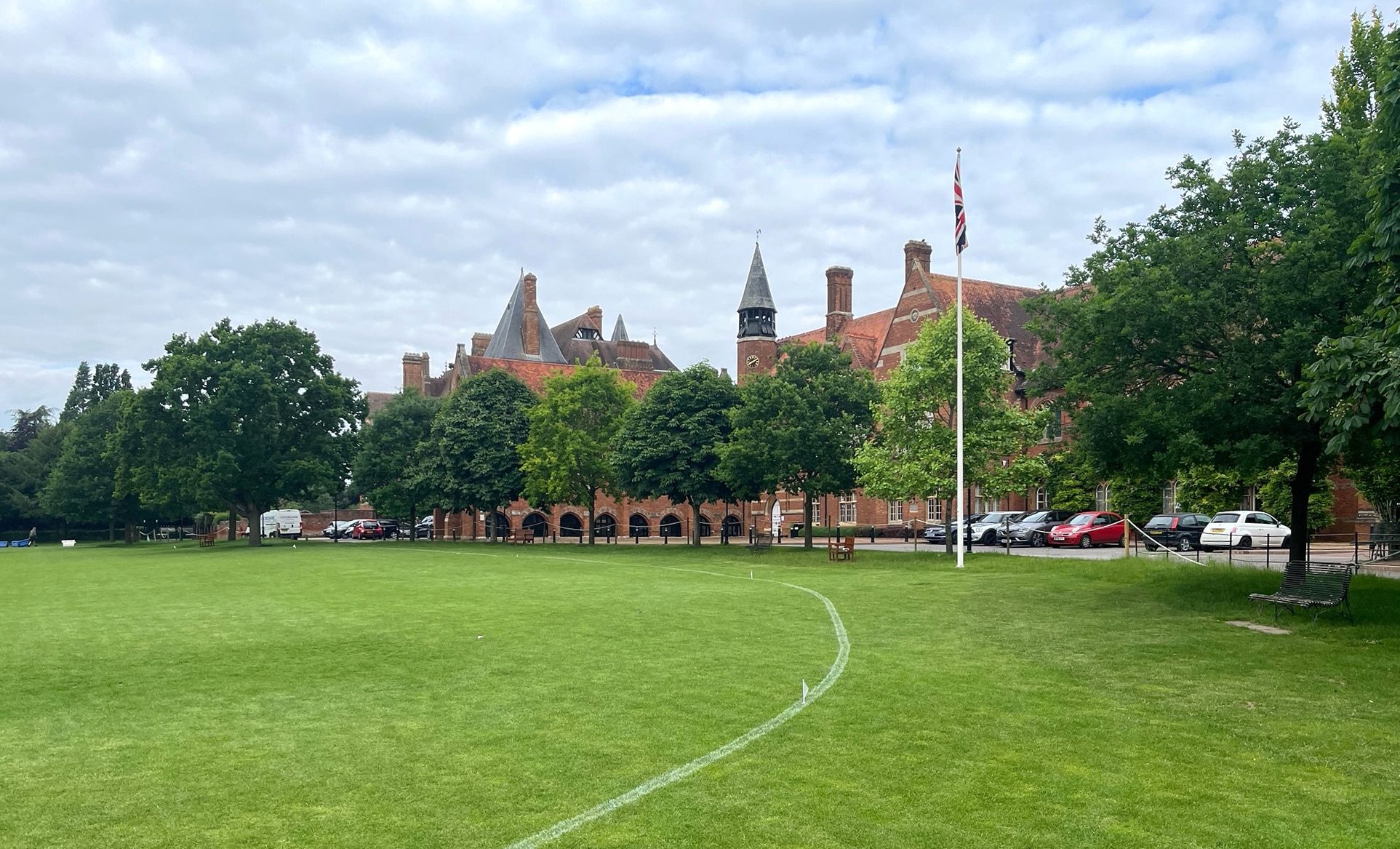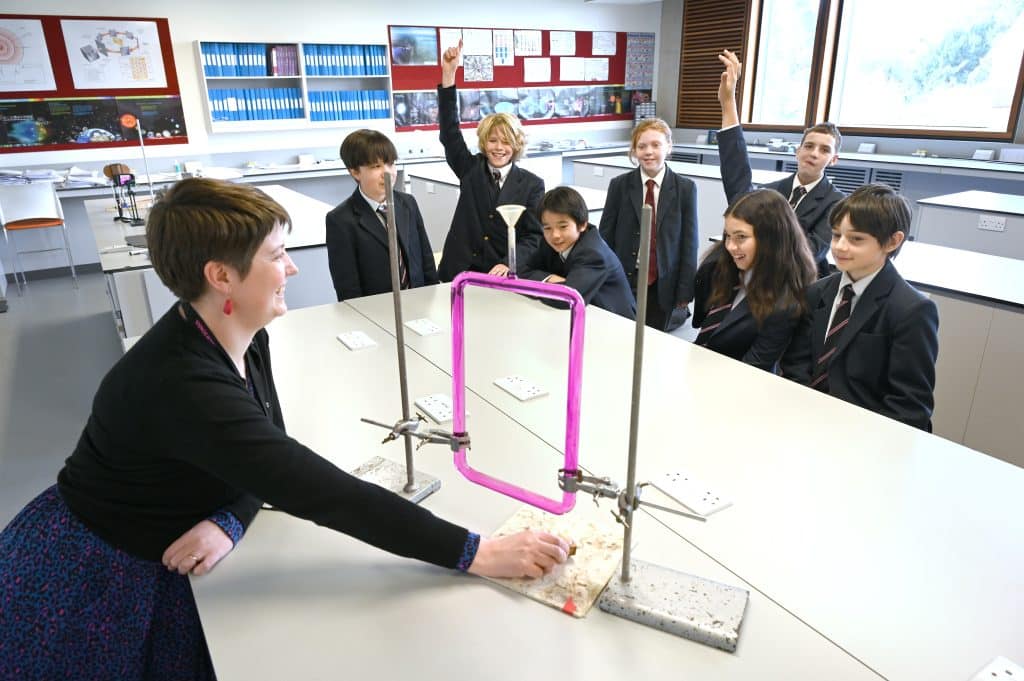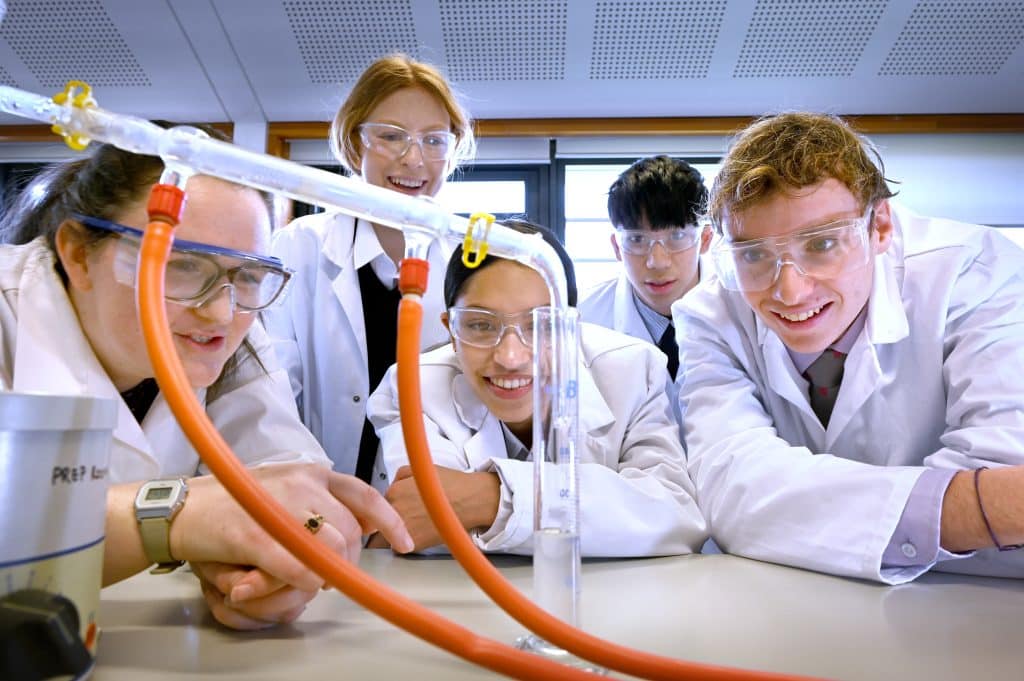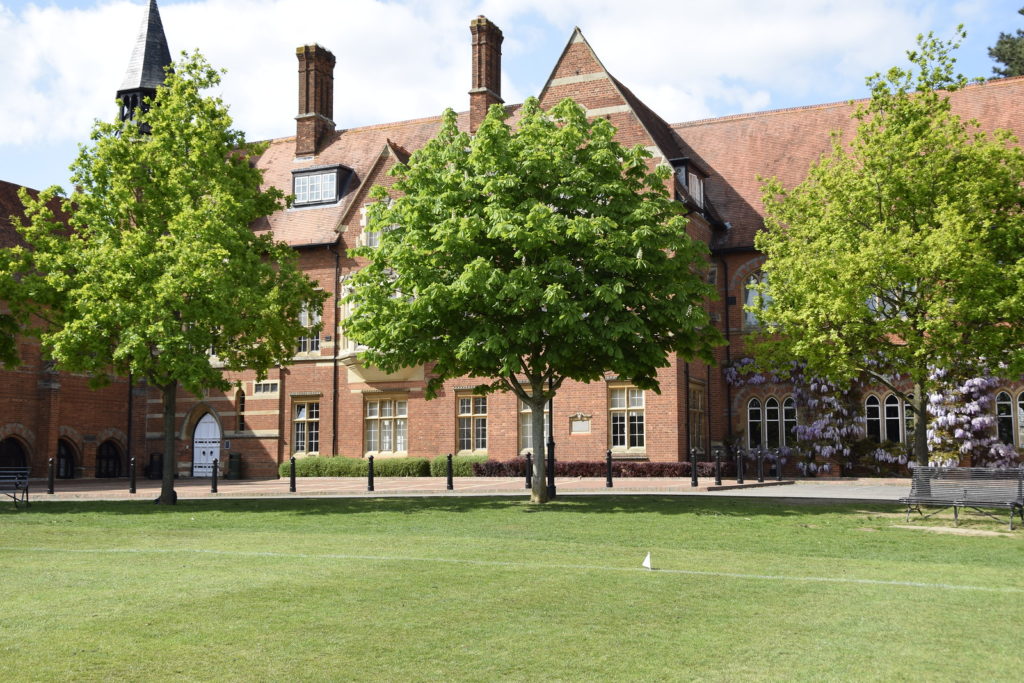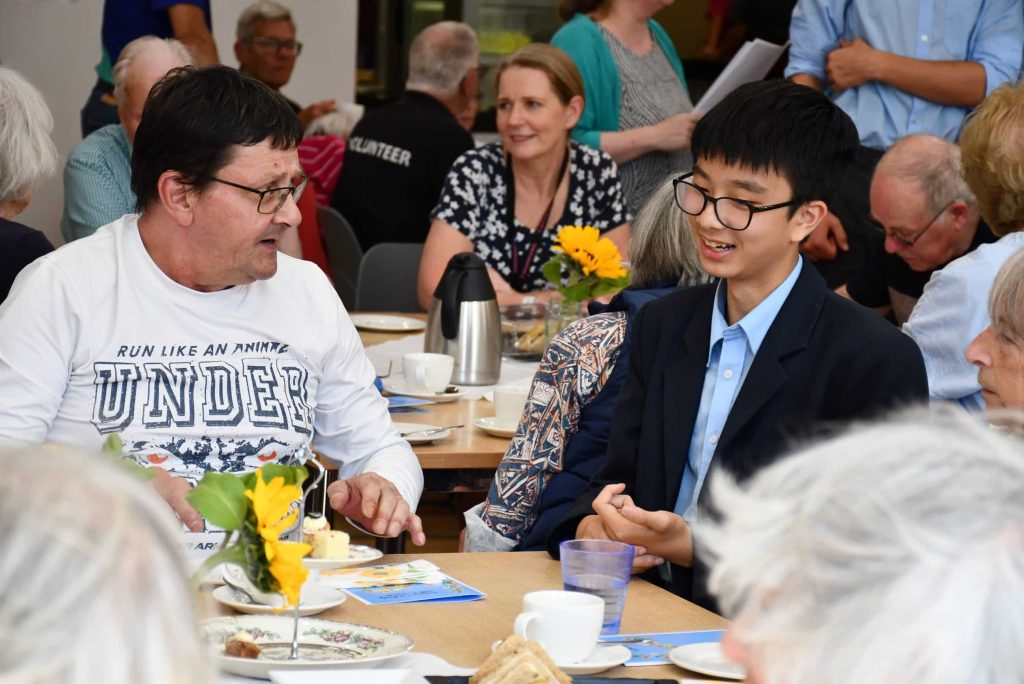On the 80th anniversary of D-Day, the school remembers the Old Abingdonians who took part on the day itself as well as those who fought and died in the Normandy campaign, 6 June – 30 August 1944.
In the early hours of D-Day, Squadron Leader John Viney (OA 1935) and the Halifaxes of 158 Squadron took part in the bombing of the strategically important 6-gun coastal battery at Maisy – and later that same day of the marshalling yard at Chateaudun.
At 9.20 am, Sub-Lieutenant Brian Healy (OA 1931) RN, captaining landing craft LCI 532, piloted members of 45 Royal Marine Commando Regiment onto Sword Beach. Hit by a shell, killing one commando, LCI 352 then struck a mine. Badly damaged, Healy managed to get the craft back to England where, following repairs, she continued to ferry men, machines and ammunition across the Channel for many weeks.
Royal Engineer, Lieutenant John Clarke (OA 1941) was among the first troops ashore on the 6th. The Engineers’ task was to clear the obstructions – mines and anti-tank obstacles – from the beaches, making them safe for the subsequent landings. Wounded that day, Clarke was hospitalised in the UK but had re-joined his unit in France by Christmas.
Private Ian Holland (OA 1941) was another OA to land on Sword Beach on the morning of the 6th. He served with the 1st Bucks Battalion, Oxfordshire and Buckinghamshire Light Infantry. Their task was to take control of the beach, organise and arrange equipment, stores and ammunition dumps, erect signage, gather the dead for burial and defend the area from German counter-attacks. Holland was killed the next day, the 7th, when the beach was bombed by German Junkers.
Lieutenant Denis Holme (OA 1939) served with the 5th Battalion Royal Berkshire Regiment. They landed on 6 June with the 3rd Canadian Division on Juno Beach, their job to overcome the German pill boxes, ship out the wounded, deal with prisoners and organise the beach so that supplies and reinforcements could be efficiently landed. The 5th Royal Berkshires remained in this role throughout June and July, their numbers gradually diminishing as members were called away to replace the casualties in other units. On 7 August Holme was sent to join the 5th Wiltshire Regiment in their attempt to take Mount Picon. He was killed two days later. His brother Michael (OA 1935) had been killed in May 1940 in the fall of France.
Trooper Dennis Hillier (OA 1927) of the 3rd Royal Tank Regiment also landed on Juno beach but not until 16 June. Ten days later, the regiment went into battle at Hill 112 outside Caen, part of Operation Epsom. Hillier was killed on the 29th. The following day, Lieutenant Bill Giles (OA 1937) of the Fife and Forfar Yeomanry, which had landed on 14 June, was killed as the Germans retook Hill 112.
It was 30 August before the Allies were able to take control of Normandy. 73,000 Allied lives had been lost – among them four Old Abingdonians. Today we remember not only Holland, Hillier, Holmes and Giles, Viney, Healy and Clarke but all the 426 OAs whose names appear on the school’s Second World War roll of service and especially the 49 who died.
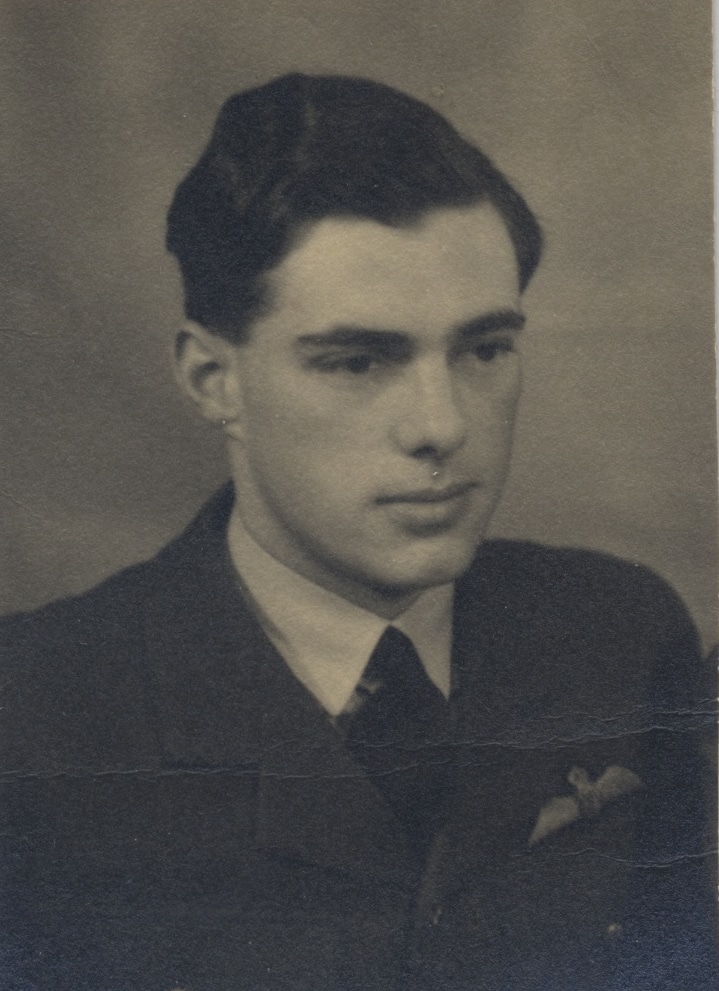
Squadron Leader John Viney
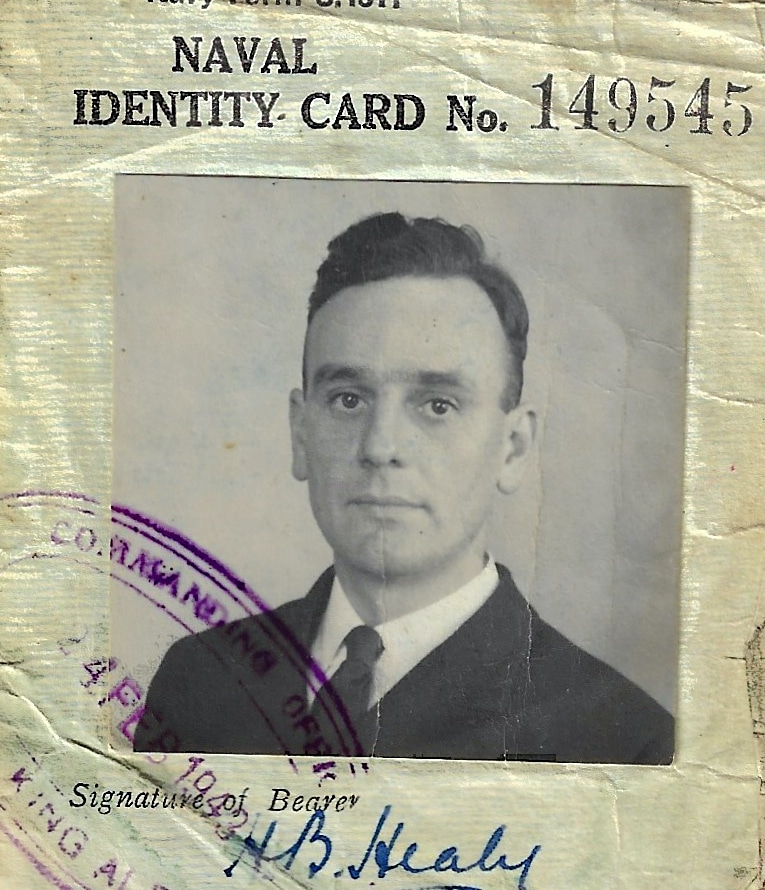
Sub-Lieutenant Brian Healy

Lieutenant John Clarke
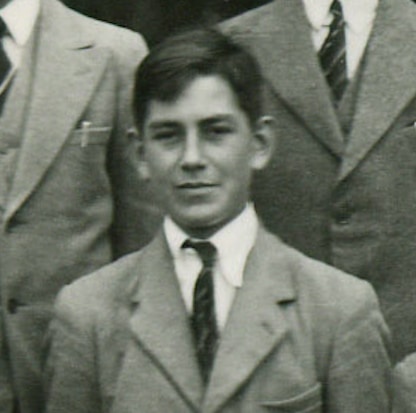
Private Ian Holland

Trooper Dennis Hillier
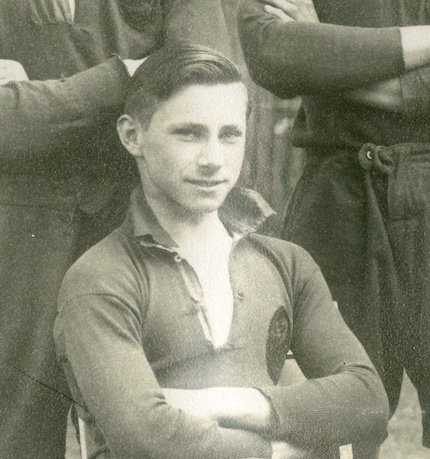
Lieutenant Bill Giles
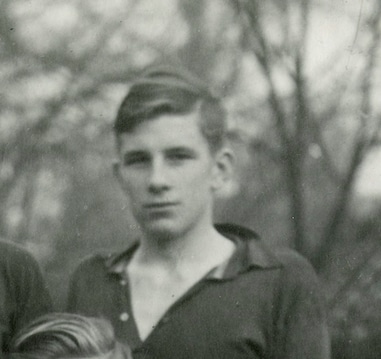
Lieutenant Denis Holme
